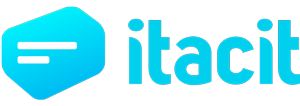Late last year I had a bit of a personal realization that’s worth sharing. We were on a journey to make iTacit’s LMS for employee training accessible and inclusive. In the mindset of understanding accessibility tools, I started interacting with various websites and applications across the internet and beyond using only a screen reader and my keyboard. I wanted to put myself (as much as I could) in the shoes of someone with a disability to widen my perspective.
Honestly, what I found was shocking.
I tried to navigate one of the world’s biggest e-commerce sites using only my keyboard. I have to say, it wasn’t easy. If it is even possible, it would have taken ages to find my desired product, enter my payment and shipping details, and make the purchase. Go ahead and try it for yourself on your favourite e-commerce or other site – and no cheating (no mouse allowed) – you can only use your keyboard.
How would that make someone feel who is simply trying to buy something online? And from the perspective of an employee looking to access their training or communication from a manager, the stakes are even higher.
Why LMS accessibility is more important than ever
The ultimate goal of any employee training or digital workplace is to ensure that all employees have an easy and effective way to access everything they need to do their job.
In full transparency, I am a developer and by no means an expert in accessibility. That said, I think there are a lot of us that want to do better and don’t always know where to start. I want to share my experience in working on accessible platforms. There’s more work to be done, but here’s what I’ve learned so far and why it’s more important than ever to ensure your employee technology is accessible.
The reality of your LMS (and employee software) accessibility
Our platform is easy to use and efficient, but it wasn’t until we took a hard look and asked ourselves “are we missing anything?” We realized we needed to do more to make sure it worked for EVERY SINGLE USER.
Our work at iTacit has always been about making the best possible employee platform. But – admittedly – we didn’t put accessibility first when we initially designed our software several years ago.
If you’re looking at your company’s employee technology stack, don’t be surprised if there are gaps in accessibility. There are great service providers that can help you uncover accessibility pitfalls – this kind of accessibility audit is a great first step. After you understand these gaps, you can make it your team’s mission to eliminate roadblocks across your entire stack.
It may be an investment in time and energy, working with your vendors and internal teams to make training content and platforms accessible, but there are benefits for your entire team. In fact, we’ve found that making our platform more accessible has made it better in every way. It is now more user-friendly, intuitive, smooth, fast, and most importantly, it is inclusive for all users.
Employee training that’s easy to access – for everyone
Approximately 16% of the global population has a disability, and that number is growing. It’s more important than ever for workplace software to be accessible. Every employee has the right to equal access to services like employee platforms, LMS technologies, intranets, and ERPs.
Expanding my understanding and implementing accessibility changes has been an eye-opening experience. I now understand that accessible employee platforms are not just a desirable feature, but a crucial one for workforce managers to adopt in 2023.
Challenging my perspective to make software better
Creating an inclusive and accessible digital workplace for all employees is a must in today’s world. It’s no longer acceptable to exclude entire portions of your workforce.
Trust me, I know it’s not easy. Sometimes you just can’t “see” it. There may be portions of a digital workplace software or a user interface that seems great to you, but in reality wouldn’t function for people with certain disabilities.
That’s why working with organizations like ReThink Ability has really helped broaden our perspective on different types of disabilities and how each individual might approach software use.
We talked to experts. We invited people to try our platform. We sought out advice, evaluated real-world experiences, and performed simulations.
We worked to thoroughly ensure our platform is accessible in every way it could be. We need to offer a platform that creates equality at work. For us, that means the ability to easily offer multiple language capability, visual aids, hearing aids, and optimized UX design. We also integrated blindness technology like screen readers and keyboard navigation.
Through working on accessibility, we’ve been able to make our platform better for everyone. We’re able to provide our clients with the tools they need to provide equal access to employee software for their entire workforce.
Moving towards accessibility in 2023
If you aren’t already actively working on accessibility, I hope I’ve convinced you of the urgency and necessity to start. In 2023, there’s really no excuse.
With or without employees who have disabilities, your organization should have accessible solutions. When you start making it more accessible for some, you make it more accessible for everyone.
I know it may be a huge undertaking for your organization. But technology and software companies need to do better. Of course for the good of society but, in my experience, it will ultimately have positive business effects as well.
Accessibility has come a long way but there’s still plenty of work to be done including on our website. At iTacit, we’re investing in making sure our products perform the same way for everyone. I hope that more organizations strive to do the same to help connect the entire workforce.











